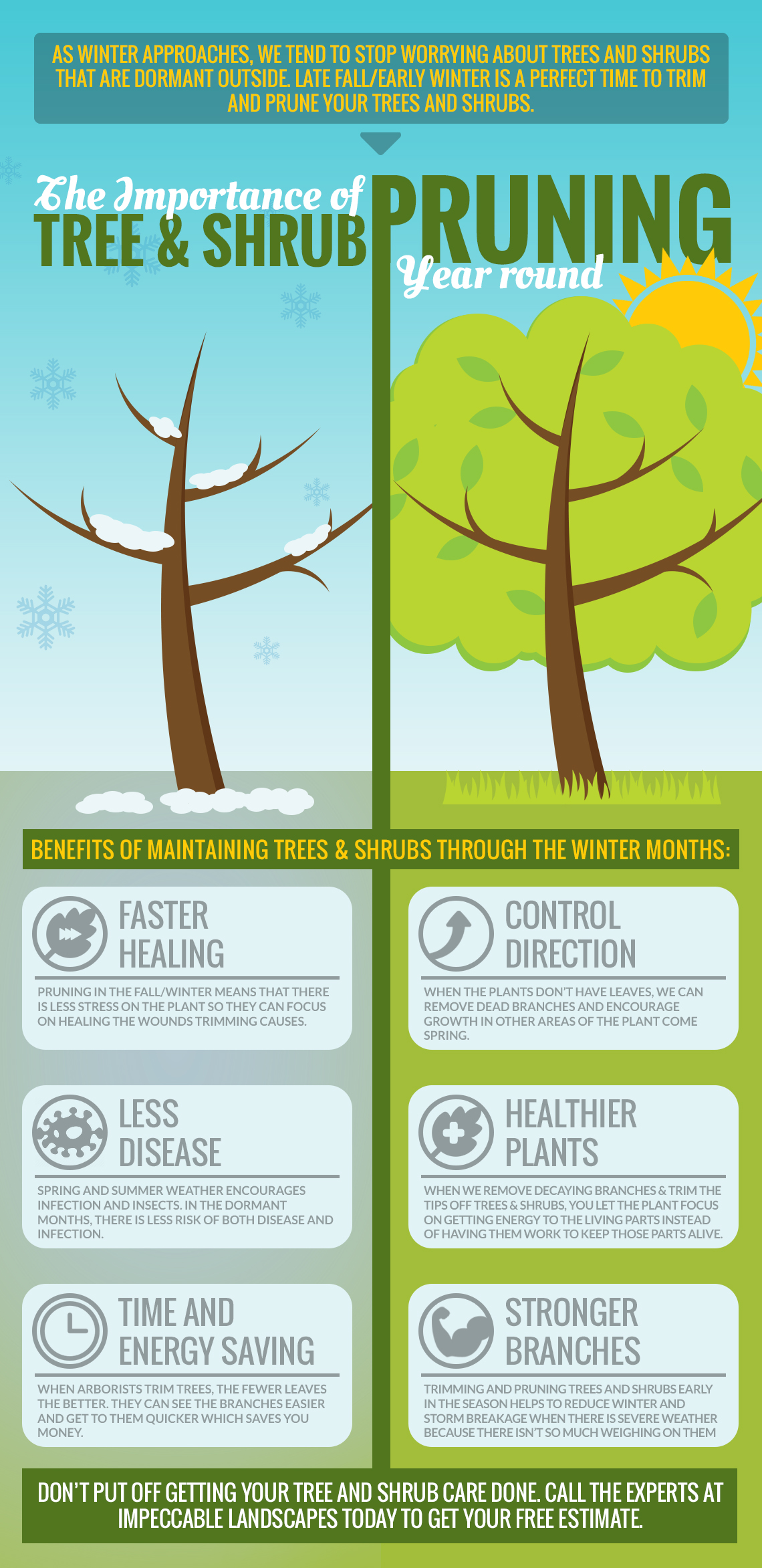When it pertains to producing a landscape that prospers, understanding the art of tree pruning is a must. Imagine being able to sculpt your trees with precision, ensuring their vitality and appeal for years ahead. By learning the vital techniques for correct cuts, timing, and structural training, you hold the key to a thriving outside space that will certainly impress all who encounter it. But just how do these pruning approaches truly impact the health of your trees and the overall landscape aesthetic?
Appropriate Trimming Cuts for Tree Health
When it pertains to preserving the wellness of your trees, making appropriate trimming cuts is essential. Incorrect cuts can bring about condition, insect invasion, and total tree decline. To make sure the vigor of your trees, always begin by utilizing sharp, clean devices to make exact cuts.
Begin by identifying the branch collar, an inflamed location where the branch attaches to the trunk. Cutting simply outside arborist wood chips promote correct healing and minimizes the threat of infection. Stay clear of leaving stubs as they can invite pests and conditions into the tree.
Remember to make cuts at a small angle, sloping far from the trunk, to stop water from merging on the injury. Furthermore, eliminate any type of dead, damaged, or going across branches to improve air blood circulation and sunshine infiltration.
Timing and Frequency of Trimming
To preserve the wellness and structure of your trees, understanding the ideal timing and regularity of trimming is important.
The very best time to trim trees is normally during the inactive period in late winter or very early springtime. Pruning during this period helps promote brand-new growth once the tree begins budding in the springtime.
Nevertheless, some trees, like spring-flowering ones, are best trimmed right after they end up growing to stay clear of cutting off next year's blossom buds.
Regular pruning is essential, yet the regularity depends on the tree varieties and its development price. For a lot of trees, a yearly inspection to get rid of dead, unhealthy, or going across branches is advised. Youthful trees may call for more frequent pruning to establish a strong framework, while fully grown trees might just require upkeep pruning every few years.
Stay visit the up coming site of trimming during the fall when conditions are a lot more quickly spread out, and refrain from hefty pruning throughout the summer season when the tree is actively growing.
Educating Young Trees for Structure
For establishing solid and healthy and balanced trees, training young trees for optimal framework is vital. By forming a tree when it's young, you set the structure for a durable and visually attractive mature tree.
Begin by recognizing the central leader, which is the major upward-growing branch. Encourage the main leader's growth by trimming away competing leaders, aiding the tree establish a strong main trunk. Additionally, remove any branches that expand internal or downward, as they can trigger structural issues as the tree grows.
It is very important to area out lateral branches evenly around the trunk to promote balanced development. As the tree develops, continue to check its development and prune as required to preserve its shape and structure.
Properly educated young trees are less most likely to create weak crotches or jammed branches, decreasing the danger of damage during tornados. Spending time in training young trees will repay with a perfectly structured and durable tree in the future.
Final thought
Since you have actually grasped the necessary strategies of tree pruning, your landscape is on its way to flourishing. By using sharp tools, making accurate cuts, and appropriately timing your pruning sessions, you are making sure the health and wellness and durability of your trees. Keep in mind to routinely check and maintain your trees to maintain them growing. With your newly found understanding, your landscape will certainly continue to expand magnificently for many years to come. Keep up the magnum opus!
